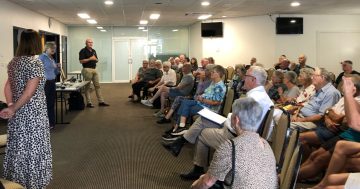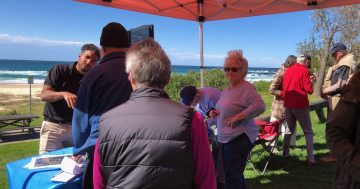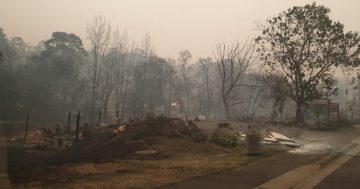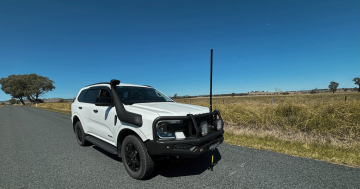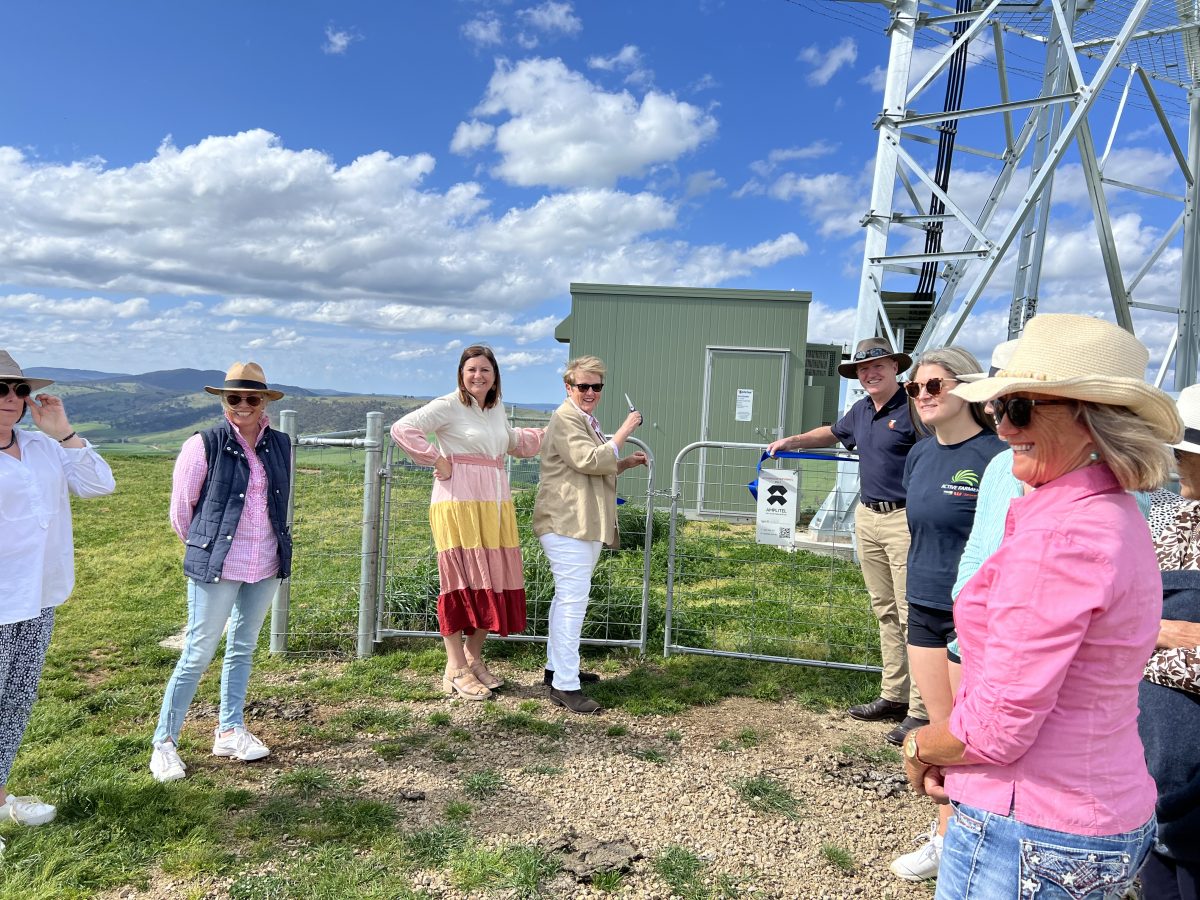
MP Kristy McBain and Maryanne Rossi (centre) with Telstra’s Chris Taylor and other members of the local community at the launch of the Tooma mobile base station. Photo: Telstra.
Tucked into a tiny nook of the Eastern Riverina, with a population just north of 100, is the little town of Tooma.
The internet and phone reception are patchy at best here – sources of mild frustration day to day, but in times of crisis, terrifying, as resident Mary Anne Rossi would discover.
When the Black Summer bushfires wiped out the closest telco tower, the event galvanised the community to join forces with Telstra and the Federal Government to build a solution.
“When the fires took the tower we had no communication whatsoever,” she said.
“Nor did we have power. To find out what was happening we were listening to battery-operated radios. We knew the fire was coming but the smoke was so bad we couldn’t see very far. We had to drive to our neighbours to make sure they were safe, families were being evacuated, paddocks being ploughed up to ensure stock were safe, houses being prepared for the worst.
“It’s a close-knit and supportive community but to be in dire straits and suddenly lose all communication and power, we felt utterly alone … It was an awful feeling.”
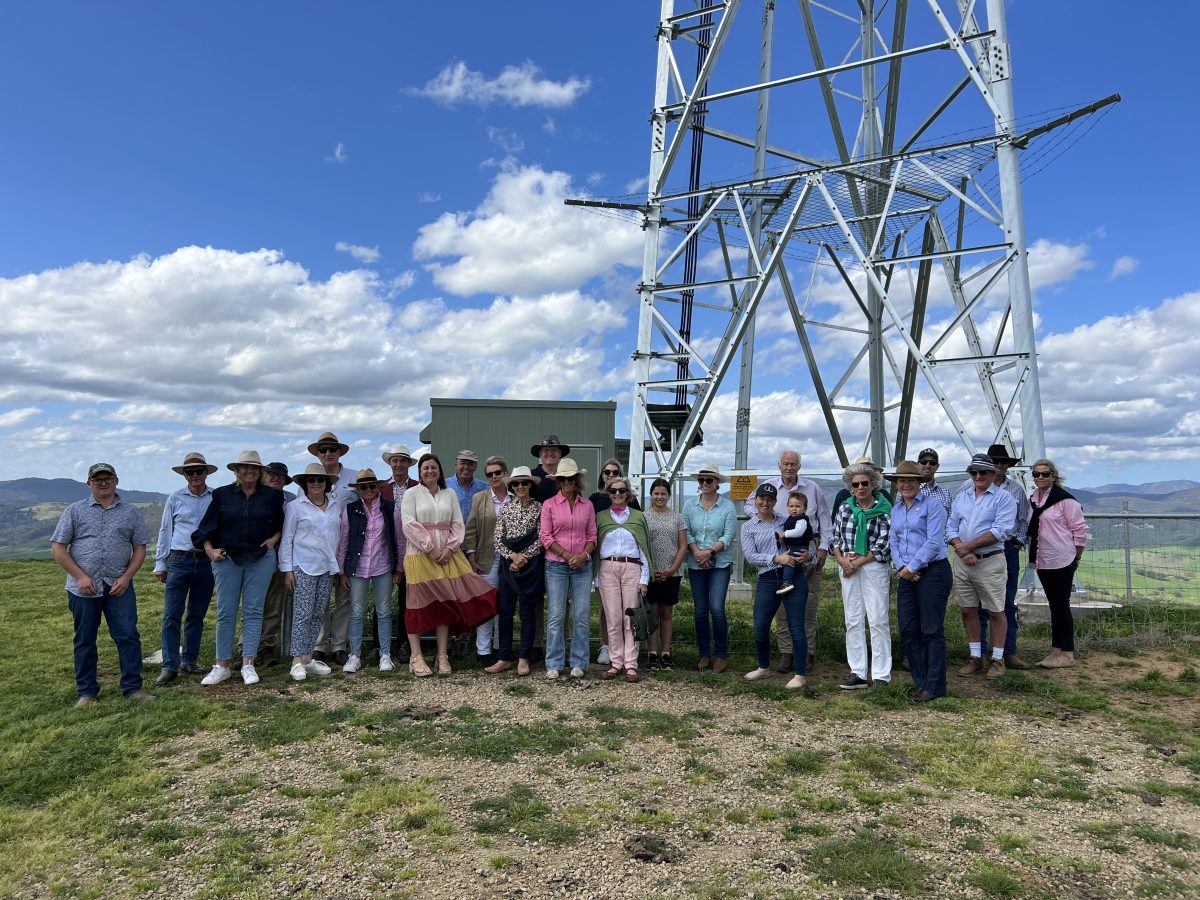
The tower was built as part of the Regional Connectivity Program and funded by Telstra, the commonwealth government and community fundraising. Photo: Telstra.
Though the dust eventually settled on the disaster, one question hung in the air – how could the town become more resilient?
Initially, Mary Anne reached out to her family and friends who had been glued to the television for status updates that hadn’t come, and who wanted to help ensure history wouldn’t repeat.
After conducting some research Mary Anne settled on a solution – a Cell on Wheels (COW). The community came on board, rallying to raise funds for the portable base station, which would be used to provide temporary cellular network coverage in emergency situations.
Friends and family got behind the cause and the money started coming in. As the fundraising efforts mounted, word of the little town taking matters into its own hands started to get out. Channel 10’s The Project picked it up and eventually, the town had raised $235,000.
That’s when the community reached out to Telstra and realised what it really needed was its own mobile tower – and it would cost more than they could ever raise on their own.
Though Telstra’s mobile coverage extends to 99.6 per cent of the population, it’s a problem faced by many of Australia’s remote towns, according to Telstra regional general manager Chris Taylor.
“In terms of those who don’t get that coverage, it’s a small number, but it’s an important number. They’re the most vulnerable cohort because they’re the most remote.
“But, when you’re getting into areas of low population density and tough terrain, the economy of building any communications structure becomes difficult.
“Part of this is about a need for more network resilience with power, but what’s important to note is that for communities like Tooma, which didn’t have mobile connectivity, there are many alternatives to explore to improve that.”
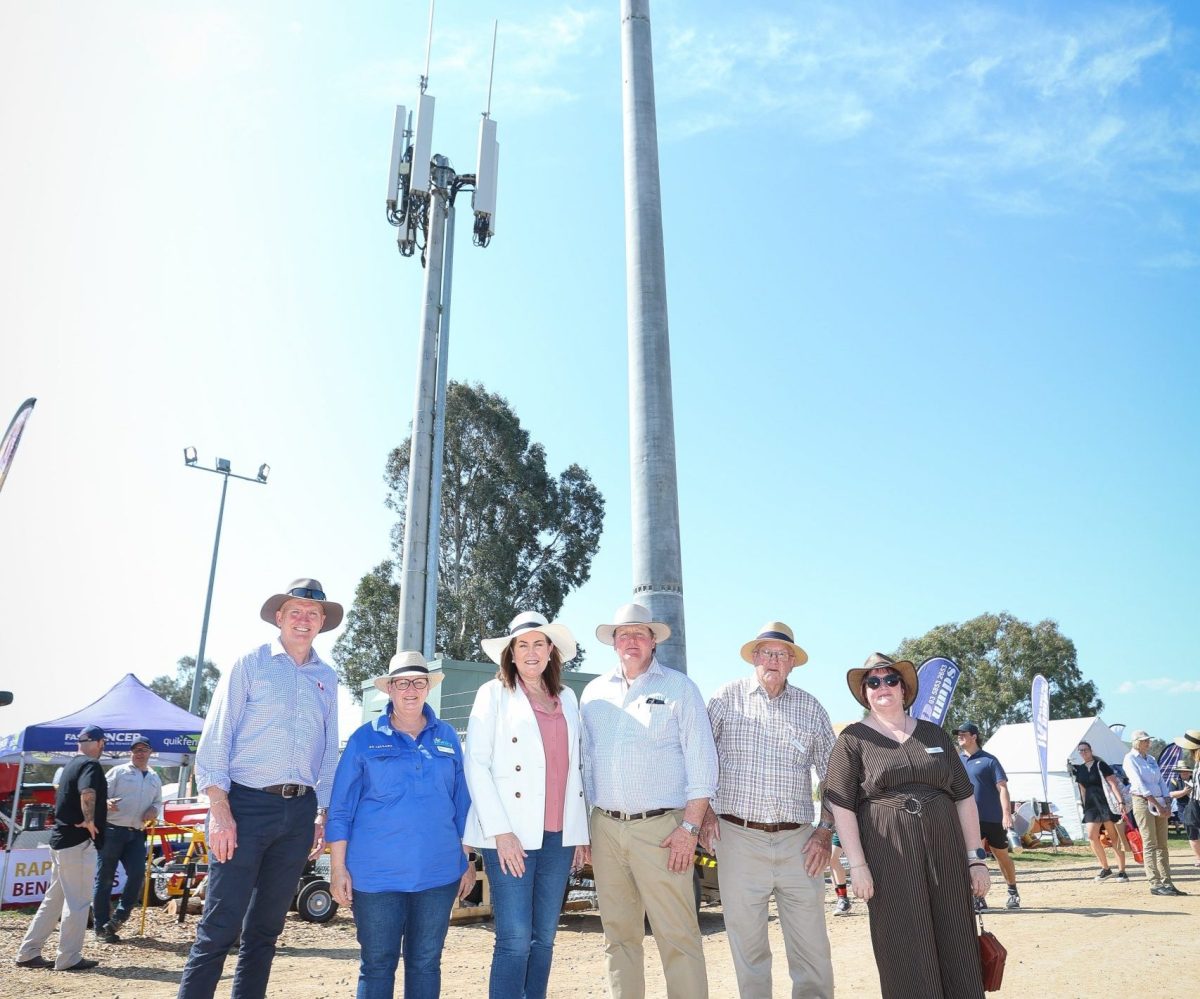
At a big event like Henty Field Days, the launch of its own tower was still a major highlight. Photo: Telstra.
Chris said there were misconceptions around available infrastructure and what it meant for connectivity in remote areas.
“People often assume if they have no mobile coverage then they have no connectivity. They don’t necessarily understand all the options they have for their home or business broadband. There are a range of options to consider from Starlink to NBN. By having these options available that opens you up to exploring things like Wifi Calling, a free setting that allows you to make calls on wifi,” he said.
“It’s about educating people on these options, so people can make informed decisions about how to optimise their use of the available technology around them, and future-proof for advancements in tech and infrastructure down the line.”
Telstra is working with a number of regional communities like Tooma to strengthen their connectivity, including the small town of Henty where they just launched a new tower at this year’s Henty Machinery Field Days.
The telco runs Connectivity Roadshows in conjunction with the Regional Tech Hub, and also works with regional communities to apply for grants on their behalf, such as the Federal Government’s Connectivity Program grant it secured to make Tooma’s tower a reality.
Combining that with efforts by communities themselves takes the possibilities to the next level.
“Government mobile blackspot programs are a critical piece of the puzzle for these rural and remote areas, but those dollars can go further if we can get the communities themselves or third parties involved,” Chris said.
“Community contribution enables us to prioritise the rollout of infrastructure that might otherwise take a lot longer.
“We would urge communities not to assume that what they have now is their best option. Be inquisitive – the technology is always changing, so always look at how you can work with telcos and government to build resilience.”
For more information, contact Telstra.
Original Article published by Dione David on Region Riverina.







